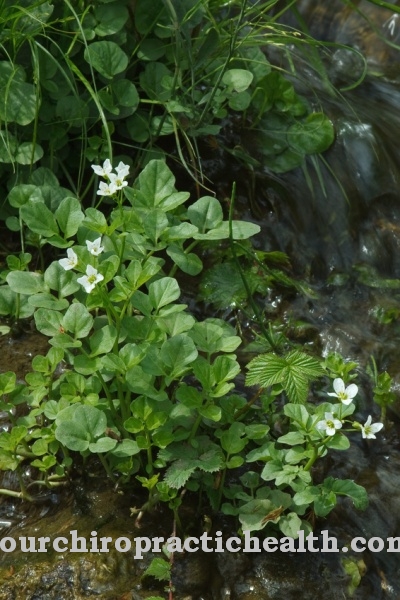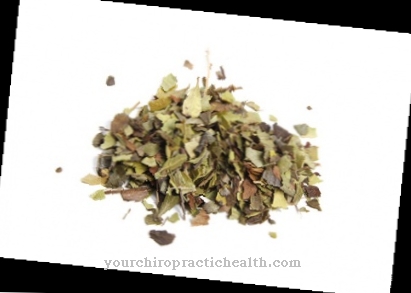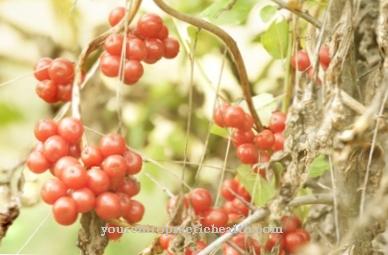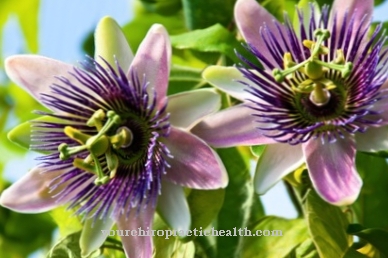The Mullein belongs to the figwort family, many species of which are used as medicinal plants. It prefers to grow in sunny and dry places and can be found all over Europe.
Occurrence & cultivation of the mullein

Mullein bloom from July to August, the inflorescences are spiky or racemose and have five sepals. The petals are very often yellow, more rarely purple or white. Mullein are biennial plants, which means that in the first year only the rosette of leaves appears, in the next year the plant grows and begins to bloom. In the past, their stems were dipped in oil, resin or wax and then used as torches.
The mullein is very often referred to as a weather candle because it was used to ward off thunderstorms. For this, the plant was smoked together with tansy. Verbacium was also seen as a protective plant against calamity and dark energies. It was made into amulets to strengthen the body and offer protection. Incense with mullein blossoms can also soothe the mind, relieve tension and alleviate the desire to fight. Mullein contain mucilage and various iridiodes such as verbascoside, aucubin, saponins, flavonoids and invert sugar.
Effect & application
Hippocrates recommended the mullein as a means of treating wounds. Aristotle used the plant to catch fish. To do this, he sprinkled the seeds in the water so that the fish were anesthetized due to the saponins contained in the seeds. In North America, Indians are said to have smoked the dried leaves to combat respiratory diseases.
Hildegard von Bingen mainly used Verbacium for depression, Dioscorides, a Greek doctor, also referred to the mullein as the "flame against the cough" and even today the plant is mainly used for respiratory diseases.
The flowers of the mullein contain saponins and flavonoids, which cover the irritated mucous membranes with a kind of protective layer and are therefore used for hoarseness, sore throats, bronchial diseases and dry coughs.
They are also used for allergic asthma or allergies. In the cold season, tea made from the mullein flowers can protect against infection, and it also helps with flu-like infections caused by viruses. The tea promotes sweating and cleanses the lymph. The mullein can also be used for herpes simplex infections.
For conjunctivitis, a compress with flowers can also provide relief. Sebastian Kneipp used the medicinal plant primarily to strengthen the heart. To do this, he recommended adding the leaves of the mullein to a meat broth with soup greens and boiling them. Mullein is also used as a remedy for rheumatism or as a diuretic. When used externally, the flowers contribute to wound healing in various skin conditions.
Importance for health, treatment & prevention
If you find the mullein on a walk, you can collect the flowers and use them to make tea. To do this, take a teaspoon of flowers and pour 250 ml of cold water over them. The tea should preferably be made cold, as the mucilage it contains is then not destroyed.
Then let it steep for at least two hours and then possibly sweeten it with honey. Just a few flowers give the tea its bright yellow color. This protects irritated mucous membranes in summer and winter and is also used for red eyes.
If you want to stock up, you should collect the flowers in the sun and in the late morning, because then they do not start to mold. The flowers can be taken from a wide variety of species, such as the small-flowered mullein (Verbascum thapsus), the large-flowered (Verbascum densiflorum) or the wind-bloody (Verbascum phlomoides). The mullein can also be combined very well with other medicinal plants such as ribwort, mallow or fennel, which also help with hoarseness and coughs.There is also the possibility of making a mullein blossom oil. This oil is suitable for massaging neck pain or can also be instilled in ear pain. To do this, put two handfuls of flowers in a glass with a screw cap and pour 100ml of high-quality olive oil over them. The mixture is then left in a warm and light place for four weeks, but the oil should not be in the sun. Then the mullein blossom oil is poured off through a cloth and stored in dark bottles.
A mullein tincture can also help with coughs or bronchitis. To do this, you collect fresh, open flowers in the morning, fill them into a screw-top container, pour high-percentage alcohol on top and leave the tincture in a warm place for about four weeks. Then it is strained and bottled. Another option is to make mullein milk sugar, which can then be mixed into any cough tea.
To do this, ground fresh flowers in a ratio of 1: 1 with lactose, then spread them on baking paper and dry the mixture. Mullein is also used as a flower essence, it strengthens and drives away sadness and gives you the courage to find your own path in life or to follow it.












.jpg)

.jpg)
.jpg)











.jpg)